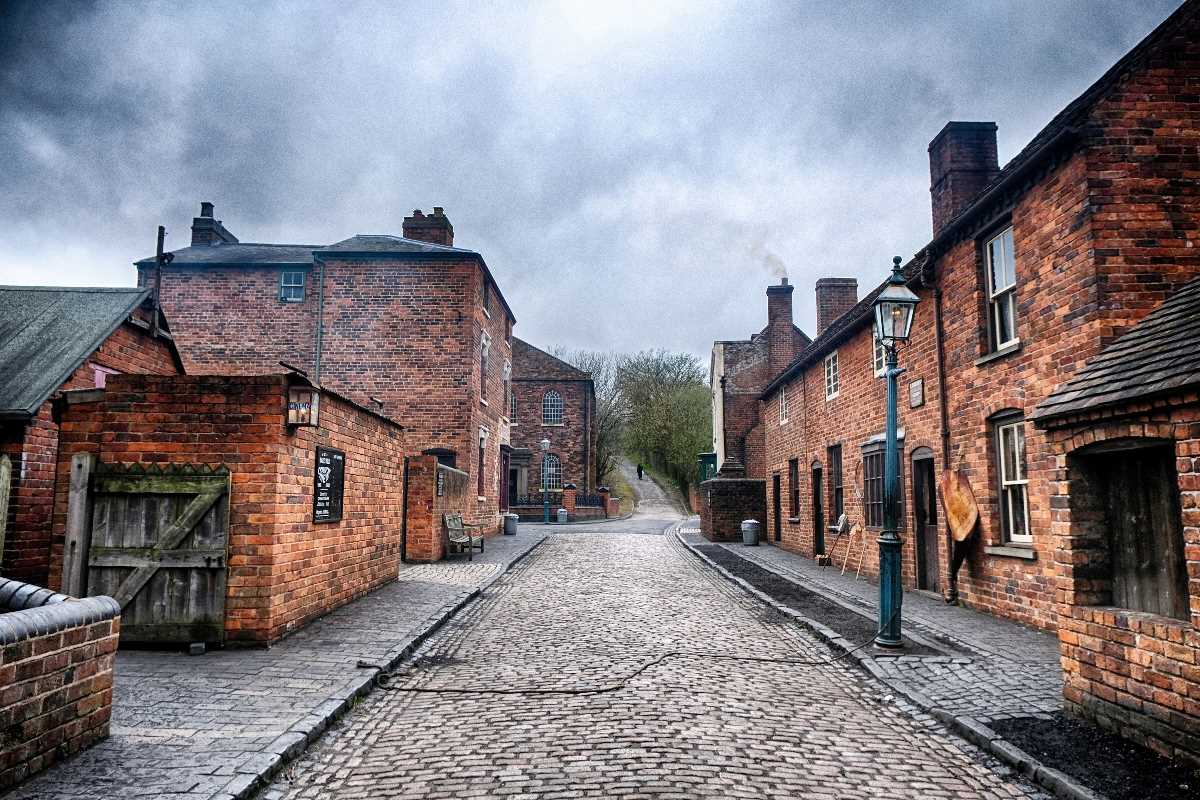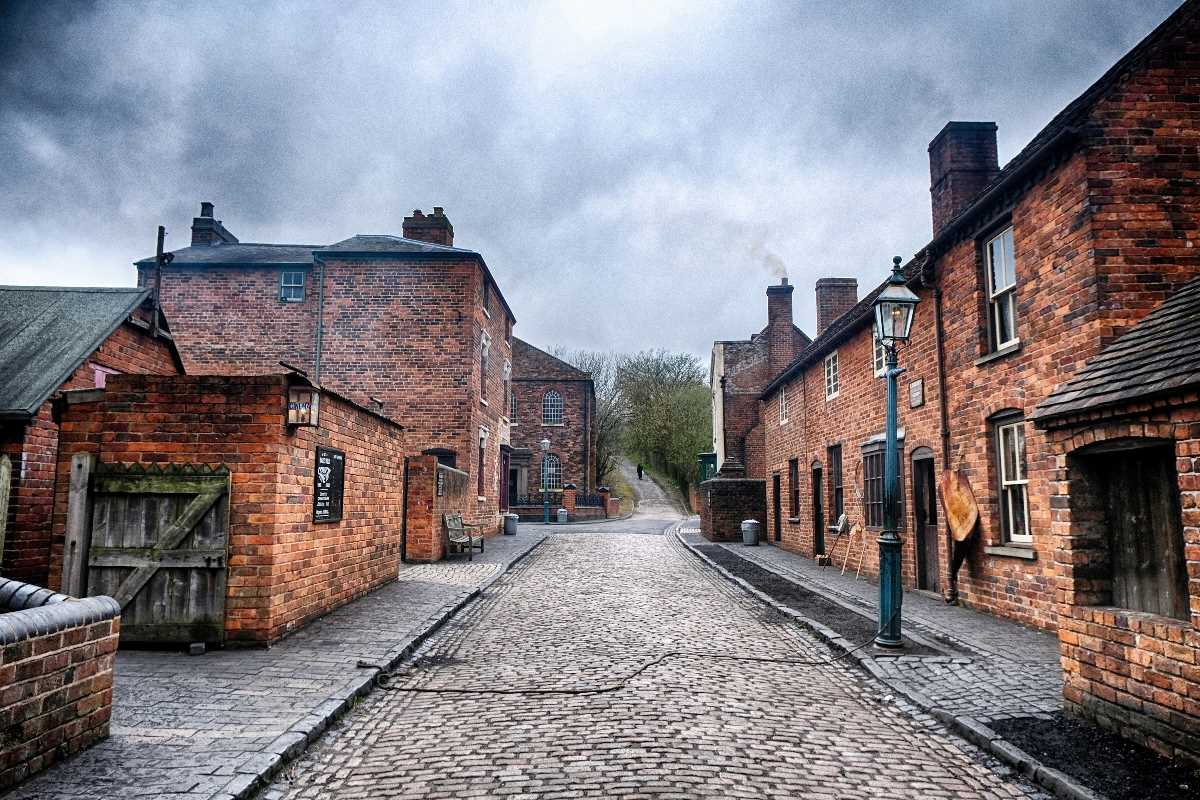A wonder round the Village at the Black Country Living Museum
 (2).JPG)
In the first of my Black Country Living Museum posts, from my August 2011 visit, we take a look around the recreated Canal Village. A collection of buildings taken from all over the Black Country and rebuilt at the open air museum in Dudley, West Midlands. If Dudley can do this, why not Birmingham (rebuild old buildings on a museum site)?
The museum was founded in 1975 on a site off Tipton Road in Dudley. The first buildings moved here in 1976. A 26 acre site has since developed. With the unique conditions of living and working conditions of the mid 19th century to the early 20th century. The museum needs your help now more than ever, while they are closed during lockdown (with no income). Visit their website (link above) buy a ticket (and use it when they reopen) or donate to help them.
For now, have a look back to the past with my August 2011 visit to the Black Country Living Museum.
Take the tram ride to the village: Trams at the Black Country Living Museum, then get off and explore the village with me.
Welcome to Old Birmingham Road. On the left is Hobbs & Sons Restaurant, where you can queue for some traditional fish & chips. There are further shops to the right.
dndimg alt="BCLM Village" dndsrc="../uploadedfiles/BCLM Village (Aug 2011) (1).JPG" style="width: 100%;" />
Also known as Hobbs Fish & Chips Shop. It was originally at 41-42 Hall Street, Dudley, being moved and rebuilt here brick by brick where it forms the centrepiece of a 1930's High Street.
dndimg alt="BCLM Village" dndsrc="../uploadedfiles/BCLM Village (Aug 2011) (11).JPG" style="width: 100%;" />
Next up is H. Morrall. MensWear Specialist. Harry Morrall’s shop used to be on Hall Street, Dudley, where he traded from 1928 to 1935. He stocked traditional men's clothes such as shirts, collars, hats, ties, socks and more. The shop reflects the fashion of the time.
dndimg alt="BCLM Village" dndsrc="../uploadedfiles/BCLM Village (Aug 2011) (12).JPG" style="width: 100%;" />
Next up was Humphrey Bros. and A. Harthill Motorcycles. Humphrey Brothers was a builders’ merchants dating back to 1921 when brothers Joseph and William first traded at no 12 Birmingham Street, Oldbury. By the 1930s the business grew to include no. 14 and by the 1940s out of no 16. as well. Passageway in the middle to the Show Room.
dndimg alt="BCLM Village" dndsrc="../uploadedfiles/BCLM Village (Aug 2011) (13).JPG" style="width: 100%;" />
Now a close up look at A. Harthill Motorcycles. In the late 1930s this shop was formerly part of the Humphrey brothers’ business (now recreated next door). At the Museum it has been fitted out as Hartills motor cycle shop, which was located in Mount Pleasant, Bilston. The shop was opened in 1937 by Abraham Hartill, who moved from a smaller unit in the same block. He mostly sold second hand motorcycles.
dndimg alt="BCLM Village" dndsrc="../uploadedfiles/BCLM Village (Aug 2011) (14).JPG" style="width: 100%;" />
Now in The Village Centre. We find Gregory’s General Store on the left. It stands next to the Canal Street Bridge. The shop was built as a pair of houses, and Mrs Gregory started selling goods from one of the front rooms. Were major alterations in 1923. Almost everything that the local community needed was stocked in and around Lawrence Lane at the shop. The shop was originally built as a pair of houses in 1883 at Lawrence Lane, Oldhill by Charles Gregory, an ironworker. The house in the middle was The Chainmaker's House and H. Emile Doo Chemist & Druggist was at the far end to the right.
dndimg alt="BCLM Village" dndsrc="../uploadedfiles/BCLM Village (Aug 2011) (2).JPG" style="width: 100%;" />
We are now inside of The Chainmaker’s House. It used to be next to Gregory’s Stores in Lawrence Lane, Old Hill. It was the first house to be rebuilt at the museum. It was built in 1886 as a washhouse, known locally as a coalhouse. The interior has been displayed to reflect the home of a late Victorian chainmaker of 1914. In the kitchen to the back of the house was a cast iron cooker / stove.
dndimg alt="BCLM Village" dndsrc="../uploadedfiles/BCLM Village (Aug 2011) (4).JPG" style="width: 100%;" />
Next up was H. Emile Doo Chemist & Druggist. The shop was a replica of Mr Harold Emile Doo’s shop in Halesowen Road, Netherton. The shop front was original, acquired when the premises was modernised in 1979. The fittings are of the 1920's, were donated by the Doo family (no they are not related to Scooby Doo!). There was a photographers studio inside.
dndimg alt="BCLM Village" dndsrc="../uploadedfiles/BCLM Village (Aug 2011) (5).JPG" style="width: 100%;" />
A look inside of the chemist shop. There was a fascinating range of early twentieth century cosmetics, displayed in the original mahogany cabinets. There was a demonstrator who told you all about the equipment and strange ingredients used by the chemists' to treat all sorts of complaints.
dndimg alt="BCLM Village" dndsrc="../uploadedfiles/BCLM Village (Aug 2011) (7).JPG" style="width: 100%;" />
At the end of the street was this pub the Bottle & Glass Inn. The inn was originally located at Brierley Hill Road, Brockmore, close to the canal with the Stourbridge Flight of 16 locks. In the 1820s the pub was known as the Bush public house, but by the 1840s it was known as the Bottle and Glass. Phillip Hamish MacDonald Wood was the Licenced Victualler.
dndimg alt="BCLM Village" dndsrc="../uploadedfiles/BCLM Village (Aug 2011) (3).JPG" style="width: 100%;" />
Down here was the Station Road Cottages and the Ironmonger's Shop. The cottages were displayed as they may have been around 1910, when two branches of the Newton family lived in them. The two cottages are replicas of a pair that stood on Station Road, Oldhill, probably built in 1848. And are typical workers houses of the late 18th and early 19th century in the Black Country. Nash’s ironmongery opened in 1860 in Oldbury, supplying both domestic ironmongery and works trade. The shop had been recreated as it would have been in the 1930s on Pipers Row. It is now on the right hand corner of Canal Street.
dndimg alt="BCLM Village" dndsrc="../uploadedfiles/BCLM Village (Aug 2011) (6).JPG" style="width: 100%;" />
A closer look at the Station Road Cottages. The left hand cottage was expanded in the 1860s. And the right hand cottage at the turn of the 19th century. Edward Newton lived in the cottage to the left with his wife and family. He was described as a ‘coal heaver’. His brother Thomas was a nail maker and lived in the cottage to the right. His wife ran a sweetshop from the front room, which is now part of the Cobbler's Shop. The Canalside Cafe was to the left of here.
dndimg alt="BCLM Village" dndsrc="../uploadedfiles/BCLM Village (Aug 2011) (8).JPG" style="width: 100%;" />
Next up was the Back to Back Houses on Brook Street. The three Brook Street houses were originally built in Sedgley. The cottages are in the period of 1924. At no. 11 was WW1 veteran, who was a an employee of the adjacent brass foundry. No. 12 was occupied by a couple whose children had grown up and moved into their own homes elsewhere. The final house was occupied by a man described as an art metal worker. Was much better off financially. Brook Street had gas installed in the houses with gas cookers in the kitchens, and gas lights.
dndimg alt="BCLM Village" dndsrc="../uploadedfiles/BCLM Village (Aug 2011) (9).JPG" style="width: 100%;" />
St James's School was on Old Birmingham Road. The school was originally built on Salop Street in Dudley in 1842 near St James Church. The architect was William Bourne of Dudley. It could accommodate 300 children. It was moved to the museum in 1991, with funds provided by the Charles Hayward Trust. Today it is displayed as is it was in 1912. Despite the conditions of the building, it continued to be used as a school until 1980. The head teacher was Mrs. T. Griffiths. Built in 1842, an extension was built in 1845. Hot water and heating installed by the 1890's. The school was renovated in the 1930's. American forces stationed in Dudley from 1940 - 45 were based in this building during WW2. The school was converted into a community centre in 1980, but by 1989 it was structurally unsafe. All this changed when it moved to the museum in 1991.
dndimg alt="BCLM Village" dndsrc="../uploadedfiles/BCLM Village (Aug 2011) (10).JPG" style="width: 100%;" />
Finally we have The Workers' Institute. It originally came from Cradley Heath. It was a landmark of the achievments of British labour history. The interior is set as it was in 1935. Upstairs was a memorial to Mary Macarthur, one of Britain’s greatest union leaders. She stood as the first Labour Party candidate for Stourbridge in 1918. Inside was a 300 seat auditorium which hosts costumed performances, living history theatre, education and entertainment activities.
dndimg alt="BCLM Village" dndsrc="../uploadedfiles/BCLM Village (Aug 2011) (15).JPG" style="width: 100%;" />
A look in one of the rooms in The Workers' Institute. A woman staff member talks to a lady on the other desk. Also has the old style telephone. Their was a Royal typewriter on this desk.
dndimg alt="BCLM Village" dndsrc="../uploadedfiles/BCLM Village (Aug 2011) (16).JPG" style="width: 100%;" />
I hope you have enjoyed this tour of the village at the Black Country Living Museum.
Photos taken by Elliott Brown.
Follow me on Twitter here ellrbrown. Thanks for all the followers.




